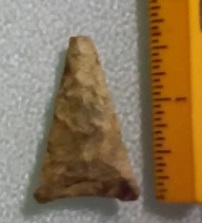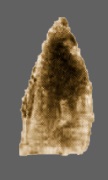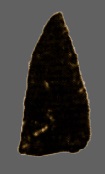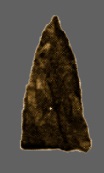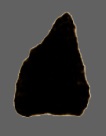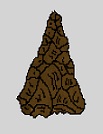Outline is Representative of Size and Shape:


Name Details:
Identified By: Bennie C. Keel
Named For:
Date Identified: 1988
Type Site: Brevard area of North Carolina
Identified By: Bennie C. Keel
Named For:
Date Identified: 1988
Type Site: Brevard area of North Carolina
Point Validity:
Valid type
Keel is an anthropologist and professor at the University of North Carolina – Chapel Hill. He is considered an expert on southeastern archaeology and is dedicated to archaeological preservation. He was awarded the Lifetime Achievement Award in 2012 by the Society of American Archaeology. This type was named in a professional publication and has many professional references. This is considered a valid type.
Keel is an anthropologist and professor at the University of North Carolina – Chapel Hill. He is considered an expert on southeastern archaeology and is dedicated to archaeological preservation. He was awarded the Lifetime Achievement Award in 2012 by the Society of American Archaeology. This type was named in a professional publication and has many professional references. This is considered a valid type.
Connestee Triangle
Cluster: Late Woodland to Early Mississippian Triangle Cluster Description of Physical Characteristics and Flaking Pattern:
This is a small to medium (.9 to 1.9 inch) isosceles (half the width as the height) triangle. The blade is primarily straight, but may vary from slightly excurvate to slightly incurvate. The base is straight. Many examples have part of the cortex remaining on the face and is crudely made. This point has a random flaking pattern.
Size Measurements:
Length - 24 to 47 mm, Width - 15 to 24 mm, Thickness - 4 to 9 mm
Length - 24 to 47 mm, Width - 15 to 24 mm, Thickness - 4 to 9 mm
Commonly Utilized Material:
Additional Comments:
Keel (1987) notes that this is similar to, only smaller than, the Garden Creek point. Keel feels that individual points of this type may be misclassified as Camp Creek or Greenville points.
Keel (1987) notes that this is similar to, only smaller than, the Garden Creek point. Keel feels that individual points of this type may be misclassified as Camp Creek or Greenville points.
Distribution: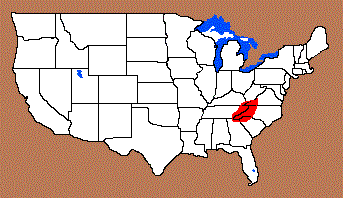

Distribution Comments:
This point is primarily found in the Appalachian Mountains of North Carolina and into Virginia, Tennessee, South Carolina, and Georgia.
This point is primarily found in the Appalachian Mountains of North Carolina and into Virginia, Tennessee, South Carolina, and Georgia.
Age / Periods:
Date: 2,300 - 1,600 B.P.
Cultural Period: Middle Woodland
Glacial Period: Roman Warm
Culture:
Date: 2,300 - 1,600 B.P.
Cultural Period: Middle Woodland
Glacial Period: Roman Warm
Culture:
Age Details:
This type is part of the Connestee Phase.
This type is part of the Connestee Phase.
Other points in this cluster / Related / Associated Points:
Camp Creek, Clements, Hamilton Triangle, Fort Ancient, Fresno, Madison, Maud, Levanna, Pinellas, Uwharrie, Yadkin
Camp Creek, Clements, Hamilton Triangle, Fort Ancient, Fresno, Madison, Maud, Levanna, Pinellas, Uwharrie, Yadkin

